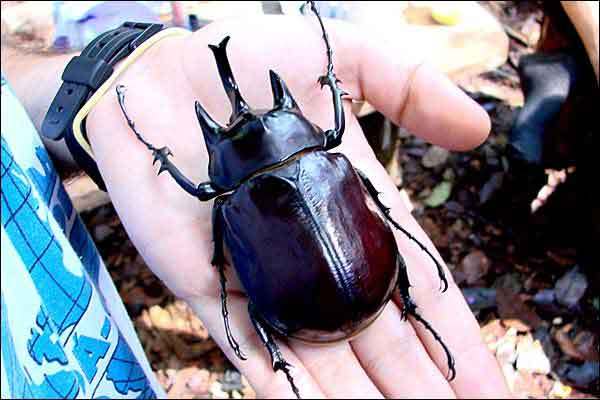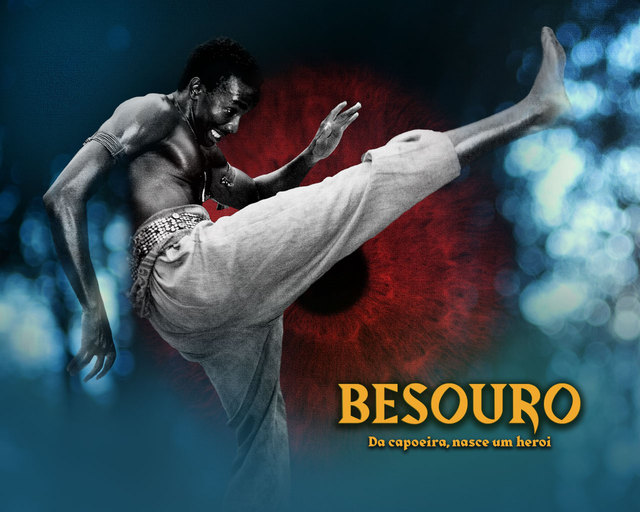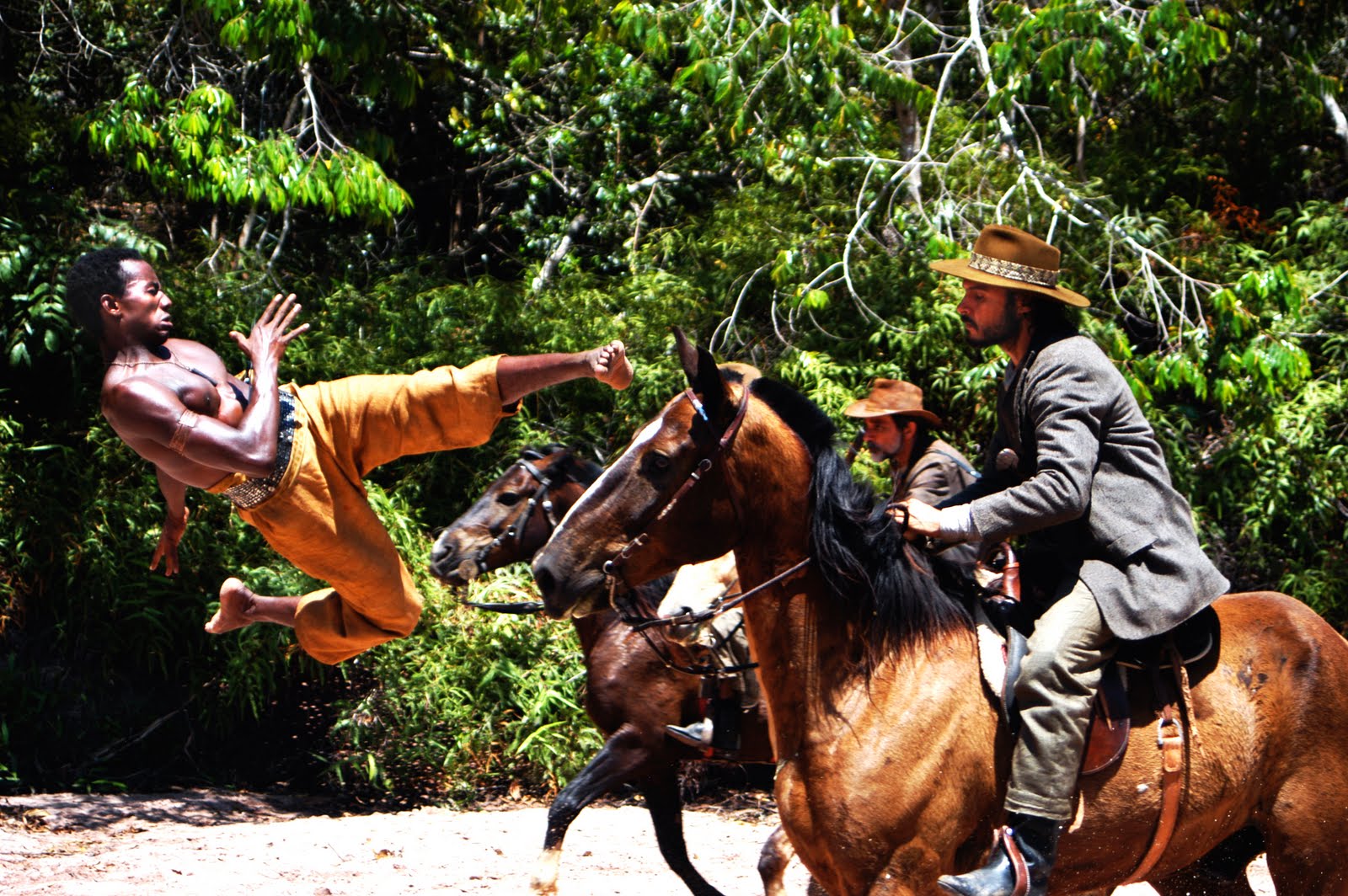History
Manoel Henrique Pereira (Born in Santo Amaro da Purificação, 1895 - 1924), better known in the Capoeira world as Besouro Mangangá, was a Bahian capoeirista that early in the twentieth century became the ultimate symbol of Bahian capoeira. His fame reached the national level from the years 1930 and with the expansion of Capoeira to other continents, is internationalized.
To tell the story about Besouro - the legendary Capoeirista, we must go back in time; back to the end of the 19th century - a time much different from ours. Those were the days of the introduction of a new law in Brazil. A law that prohibited Afro-Brazilian expressions like: Capoeira. Those who were caught practising or playing capoeira would face severe punishment. It was also the time were the slavery had just ended “officially”, and a lot of people of black origin were on the road looking for work.

One of them was João Matos Pereira who lived in Santo Amaro da Purificação (Bahia), nicknamed João Grosso. Who had a relationship with a woman named Maria Auta Pereira or Maria Haifa according to many. She became pregnant and so it was that in 1895 a son, Manoel Henrique Pereira was born. When Manoel Henrique was still a young boy he received his first lessons in Capoeira from an African and ex-slave named Tio Alípio. These events took place in Trapiche de Baixo, the poorest neighbourhood of Santo Amaro. Since capoeira was forbidden, this training had to be done in secret. As time went by Manoel Henrique grew, in length and Capoeira as well. He received the nickname “Besouro Mangangá”. He is also known by other nicknames such as: "Besouro Preto" and "Besouro Cordão de Ouro".
Besouro means beetle in Portuguese. That name was chosen because he became known to be able to escape out of difficult situations. Just like a black beetle, spreading its wings at the top of a branch and taking flight. And just like a beetle he would be always on the move.
Life and Exploits

Besouro lived during the era of police chief Pedro de Azevedo Gordilho, who controlled the Salvador police in 1920 - 1926. Gordilho's name became synonymous with the persecution of Capoeiristas as he often ordered his cavalry squadron to attack Capoeira rodas wherever they were discovered. Besouro's name could be found among the police and arrest records, where, for instance, it was mentioned that he was arrested on September 8, 1918 and was given a short stay in jail for an altercation with police officers. This kind of story about Besouro (i.e. having problem with the authority) were numerous, as according to stories passed on by generations, Besouro had a strong sense of justice due to the great injustice the black people in Santo Amaro received by the local authority. He would often intervene during mistreatment of the local people by the police. One such story told how he would face several policemen at once, beat them and disarm them without even being hit. Afterwards he would go with the arms to the police station and throw them in front of the door. Due to this, he became feared and admired at the same time for his reputation of being unbeatable and for maintaining justice.
Legend also has it that the reason Besouro was able to oppose the local police so successfully wasn’t only because he was a good fighter and knew the police methods quite well. He was said to have a “Corpo Fechado” which literally means: closed body. It is a term well known in certain African religions, where through special rites and rituals one would be able to have a body where neither knife nor bullet could penetrate. There are stories about police shooting at him, without being able to hit him, or Besouro fainting being hit and taking advantage of the situation when the police let their guard down.
According to people with the knowledge of Candomblé, an African religion that was vast spread through Bahia by enslaved Africans, one would have to make certain preparations to create such a body, including implanting fava beans under the skin. In Africa this is used as a preparation for battle, creating an ultimate preventive medicine from harm. The full name “Besouro Mangangá” also relates to this. Mangangá can be translated in African language as medicine that functions to close the body, protecting the carrier from harm. There are also certain restrictions for someone to be able to keep his "Corpo Fechado", namely: not passing under barbed wire, not sleeping with a woman the night before a fight and not losing his patuá (protection amulet/charms). Additionally, the effect of "Corpo Fechado" can only be broken/penetrated by a knife made of ticum (tucum).
Mangangá can be translated in African language as medicine that functions to close the body, protecting the carrier from harm (derived from nganga, Bantu term for Doctor). This is because Besouro was said to never go anywhere without his patuá (charms - often worn in pouches strung around the neck or waist). It can also have the connotation of a practitioner or disciple of magic. In Northeaster Brazil, the term Mangangá is also applied to a species of large wood-gnawing beetles
Death and Legacy

Besouro has also been called "Danado", meaning that he was damned. It is said that his final demise came after gaining employment as a cattle herder on the ranch of a Dr. Zeca. He had a furious arguments with Zeca's son, Memeu, who swore to Besouro that he would see him dead. Zeca had a friend called Baltazar who was the administrator of the Maracangalha. Zeca told Besouro, who was illiterate, to take a letter to Baltazar. Unbeknownst to Besouro, the letter said, "Kill the messenger who brings this letter". Baltazar read the letter in a leisurely way and asked Besouro to return the next morning so he could give him a reply for Dr. Zeca.
Plans were already afoot to assassinate Besouro. It was well known that he had the power to resist gunshots, so a special wooden knife made of tucum was prepared to counter this magic. It could also be said that the fact that Besouro delivered to letter ordering his own death was part of the ritual to be able to kill him, as there were many other means to have Baltazar informed and ready for the ensuing ambush. The legend has it that Besouro spent the night in the arms of a local prostitute paid by Baltazar who stole Besouro's patuá and left. The next day, he went to Baltazar for the reply. As he walked through the gate, there were already 40 men taking aim and fired at him at the first sight. It is said that none of the bullets could hit him eventhough the men were firing straight at thim. Besouro fought fiercely, though in the end, a man called Eusébio Quibaca sneaked up on Besouro while he was fighting and stabbed him with a knife of ticum in the abdomen, breaking the protection of Besouro, and thus killing him instantly. He died at the young age of 24.
The death certificate reported as follows:
Manoel Henrique, mulato escuro, solteiro, 24 anos, natural de Urupy,residente na Usina Maracangalha, profissão vaqueiro, entrou no dia 8de julho de 1924 às 10 e meia horas do dia, falecendo às sete horas da noite,de um ferimento perfuro-inciso do abdômen.
Which approximately translate as follows:
Manoel Henrique, dark mulatto, single, 24 years old, native of Urupy,Plant Maracangalha resident, profession of cattle herder, entered the 8th of July 1924 at 10:30 hours of the day and died at seven o'clock in the evening, (due to) an injury piercing the section of the abdomen.
- Besouro Mangangá was one of the most notorious proponents of Capoeira Brazil has ever seen and to this day is a legend in world martial arts. His legend was told for generations to come, and his exploits made songs. He is remembered as a hero who fought against oppression and persecution and over time, his name synonymous as a symbol of loyalty, bravery and freedom.
References
Wikipedia: http://pt.wikipedia.org/wiki/Besouro_Mangang%C3%A1
Capoeira: The Jogo de Angola from Luanda to Cyberspace (Gerard Taylor)
